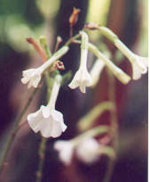As you know, N. tabacum contains some alkaloids uncluding nicotine but also they contain trace amounts of nornicotine, anabasine and others. But wild tobaccos generally contains more amount of noxious alkaloids. For example "Tree Tobacco" (N. glauca) has really very high amounts of anabasine.
We all know the smoker Native Americans. They used to smoke native Nicotiana spp. (wild tobaccos) which naturally grown in America. But there is (or was) another indigenous people smoking different Nicotiana spp. in an other continent, in Australia, Aborigines.
The Nicotiana variety " Nicotiana amplexicaulis " has really close to N. tabacum. No, it's not related with the genetics, its amount of the alkaloids is very close to the common tobacco. As an average, nicotine ratio by total alkaloids is 95 % in common tobacco but this ratio is 99.2 % in N. amplexicaulis. Also, it's nornicotine content is 87.5 % lower than N. tabacum and besides this its anabasine content is 75 % lower than common tobacco (N. tabacum).
We know that nornicotine is a precursor to the carcinogen N-nitrosonornicotine that is produced during the curing and processing of tobacco. If we use a leaf which contains lower amount of nornicotine, after curing or aging there will be lower amount of carcinogenic compounds in it. I don't know the taste of N. amplexicaulis but it may be a good start to create a new variety or if we find it we can try it alone if it's smokable or not.
Here are some info and photos of N. amplexicaulis below.
It reaches up to 1.3 m height with a densely pubescent (hairy) stalk and leaves.
Lower leaves are elliptic, the upper ones are narrowly elliptic. Lamina is up to 22 (occasionally to 30) cm in length. Lower leaves are petiolate and broadly winged, auriculate and stem-clasping. Upper leaves are sessile.
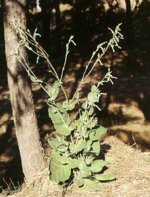
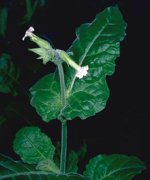
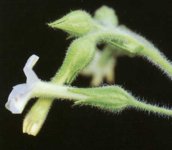
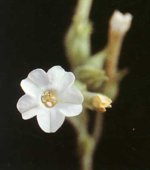
Australian friends in the forum, here's the distribution map of N. amplexicaulis but may be you may find it in your own area, in the event of a finding case let us know

We all know the smoker Native Americans. They used to smoke native Nicotiana spp. (wild tobaccos) which naturally grown in America. But there is (or was) another indigenous people smoking different Nicotiana spp. in an other continent, in Australia, Aborigines.
The Nicotiana variety " Nicotiana amplexicaulis " has really close to N. tabacum. No, it's not related with the genetics, its amount of the alkaloids is very close to the common tobacco. As an average, nicotine ratio by total alkaloids is 95 % in common tobacco but this ratio is 99.2 % in N. amplexicaulis. Also, it's nornicotine content is 87.5 % lower than N. tabacum and besides this its anabasine content is 75 % lower than common tobacco (N. tabacum).
We know that nornicotine is a precursor to the carcinogen N-nitrosonornicotine that is produced during the curing and processing of tobacco. If we use a leaf which contains lower amount of nornicotine, after curing or aging there will be lower amount of carcinogenic compounds in it. I don't know the taste of N. amplexicaulis but it may be a good start to create a new variety or if we find it we can try it alone if it's smokable or not.
Here are some info and photos of N. amplexicaulis below.
It reaches up to 1.3 m height with a densely pubescent (hairy) stalk and leaves.
Lower leaves are elliptic, the upper ones are narrowly elliptic. Lamina is up to 22 (occasionally to 30) cm in length. Lower leaves are petiolate and broadly winged, auriculate and stem-clasping. Upper leaves are sessile.




Australian friends in the forum, here's the distribution map of N. amplexicaulis but may be you may find it in your own area, in the event of a finding case let us know




